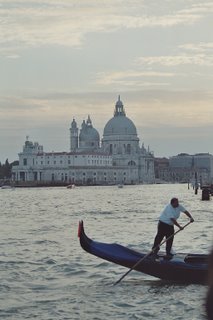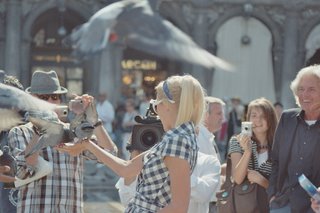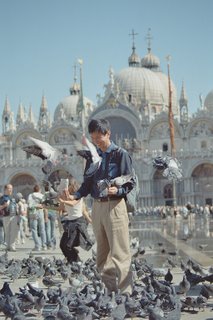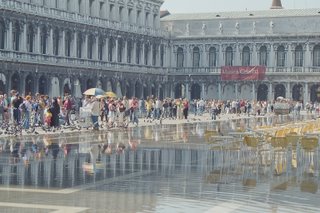Traffic Jam in Venice + Welcome to Chinatown




Venice, a floating, sinking city and a little world on its own: Built 1500 years ago, against the Barbarian invasions, on 117 islands. Nowadays, 150 canals and 400 bridges define the busy everyday life in Venice. Public transport in Venice? No cars allowed. Take a boat, the vaporetto, like a bus, passing every 10 minutes.
Monday morning, 9 o' clock, rush hour : Traffic jam on Canal Grande, direction Piazza San Marco. Vaporetti water buses close to taxis, delivery boats close to the famous gondolas. Waiting, honking, accelerating, yelling. Impatient employees, trying to get to work. Impatient tourists, who can't wait to line up for Basilica di San Marco or Palazzo Ducale, the official residence of the doges during the Venetian Empire. Impatient delivery boats, trying to respect their morning schedule, goods for restaurants and cafés are on their way.
Get used to the regular floods, the Acqua alta, "high water", following cert1ain tides. 'High water' is currently taking place between 10 am and 1 pm at Piazza San Marco. Podiums assure dry feet. In case of overcrowded podiums : sandals, bare feet, goretex shoes and rubber boots are recommended. See people walking through the water. See tourists and Paris Hilton (see photo) paying one euro to feed the pigeons and take photos of each other when those flying 'rats' sit on their arms and shit on their heads. And the bands, paid by the surrounding restaurants, continue playing.
Monday morning, 9 o' clock, rush hour : Traffic jam on Canal Grande, direction Piazza San Marco. Vaporetti water buses close to taxis, delivery boats close to the famous gondolas. Waiting, honking, accelerating, yelling. Impatient employees, trying to get to work. Impatient tourists, who can't wait to line up for Basilica di San Marco or Palazzo Ducale, the official residence of the doges during the Venetian Empire. Impatient delivery boats, trying to respect their morning schedule, goods for restaurants and cafés are on their way.
Get used to the regular floods, the Acqua alta, "high water", following cert1ain tides. 'High water' is currently taking place between 10 am and 1 pm at Piazza San Marco. Podiums assure dry feet. In case of overcrowded podiums : sandals, bare feet, goretex shoes and rubber boots are recommended. See people walking through the water. See tourists and Paris Hilton (see photo) paying one euro to feed the pigeons and take photos of each other when those flying 'rats' sit on their arms and shit on their heads. And the bands, paid by the surrounding restaurants, continue playing.
Welcome to Chinatown
Francesca's Bed and Breakfast. A Guesthouse in Venice. Found on hostels.com. Certainly some typical Italian place, I said to myself. But Francesca is called Wu Ling. A friendly Chinese guy living in Venice. Barely speaking English or Italian. But Chinese. Which is a good thing for the Asian community mainly staying in this hostel. Most of the panels in the hostel are in Corean or Chinese.
So, what about having a good toast-and-cornflakes-breakfast with 6 Chinese? An interesting experience: Because if you don't understand their language, you still have lots of time to analyse their gestures, their facial expressions, their way of moving and eating. Living anthropology.
But you might even meet non-Asian citizens: South America, Canada and India are highly represented...
0 Comments:
Post a Comment
<< Home